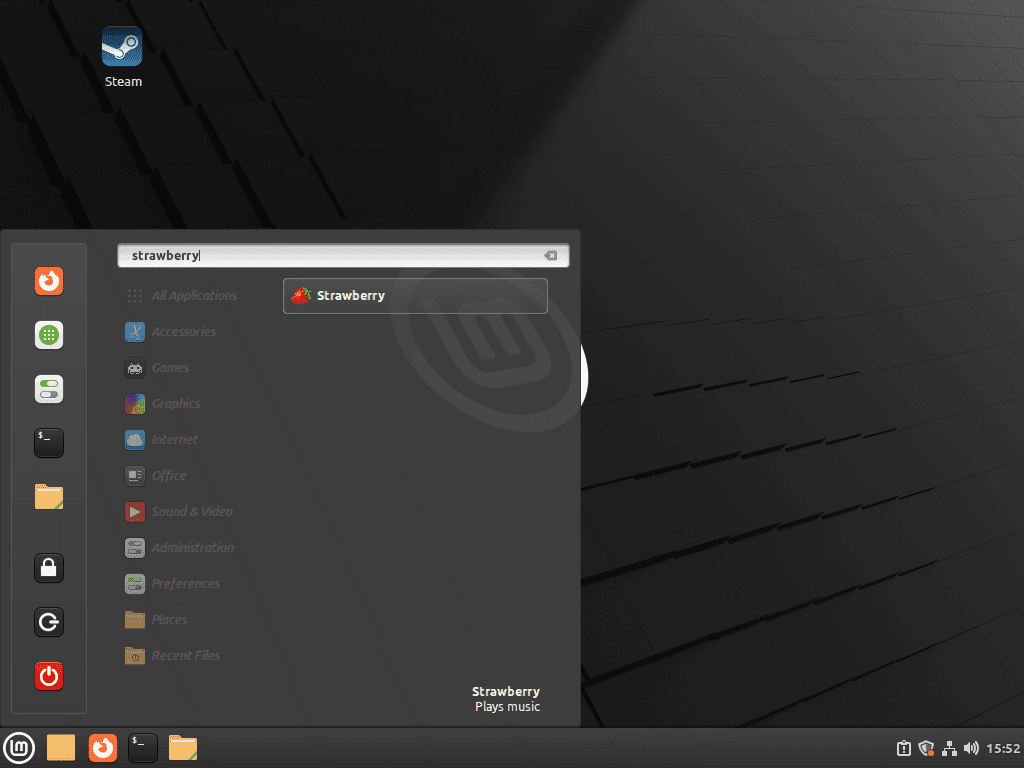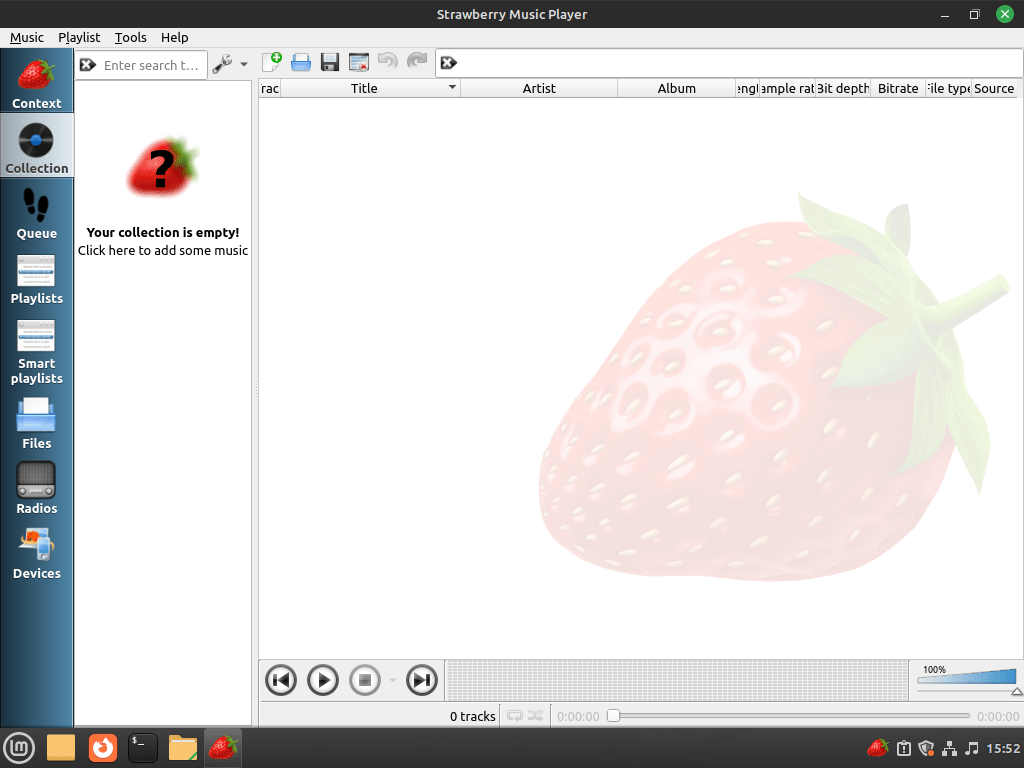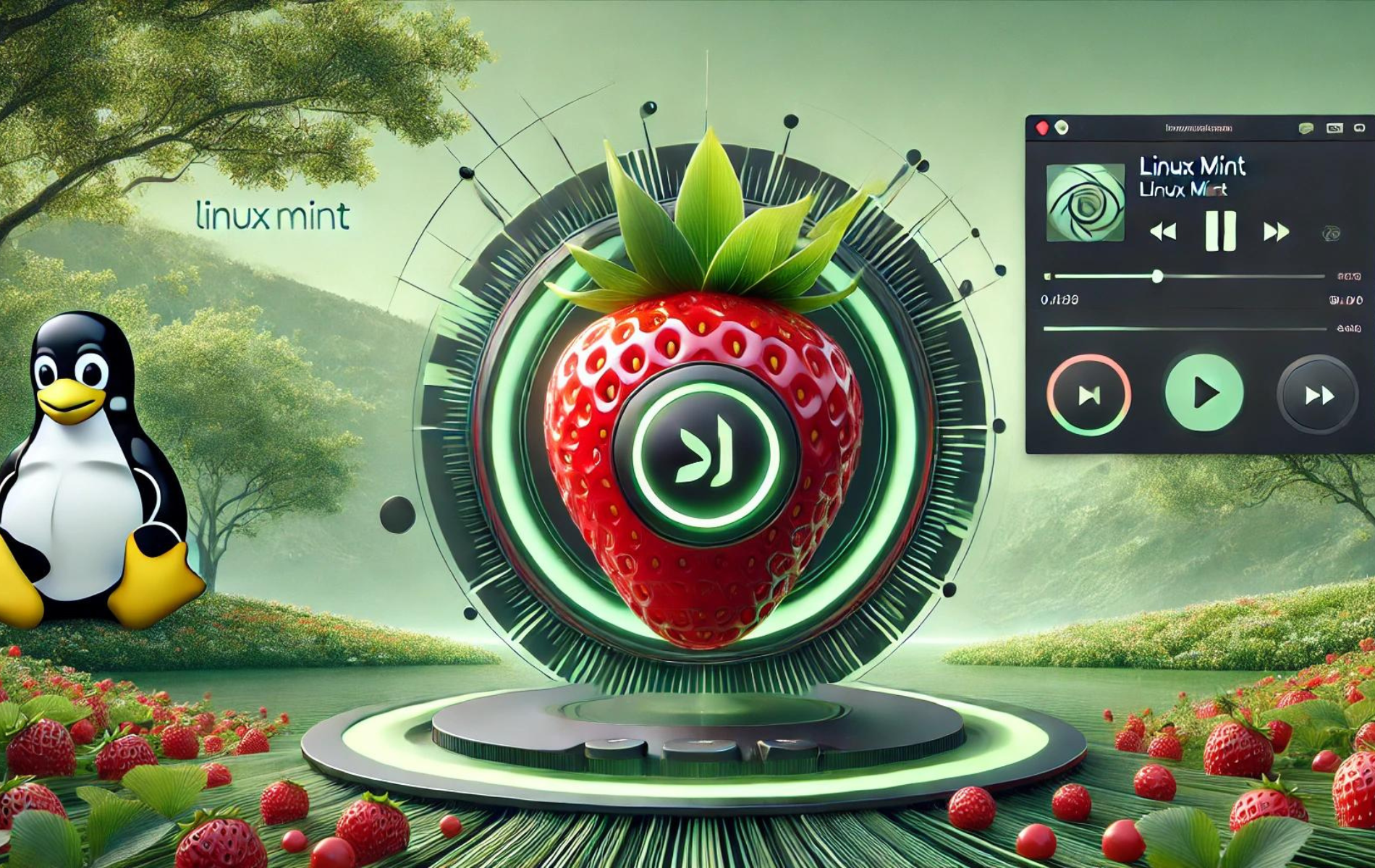Strawberry Music Player is an open-source audio player and music collection organizer that offers high-fidelity audio playback and a wide range of features. It supports numerous audio formats, including MP3, FLAC, Ogg Vorbis, and AAC, and provides advanced features such as smart playlists, album art fetching, lyrics display, and support for streaming services like Tidal and Qobuz. Strawberry also includes robust tagging capabilities and an intuitive user interface, making it an excellent choice for music enthusiasts.
To install Strawberry Music Player on Linux Mint 22, 21, or 20, you have two primary methods: using the Launchpad PPA maintained by the Strawberry team, which offers both stable and unstable builds, or installing via Flatpak from Flathub. This guide will walk you through both installation methods.
Method 1: Install Strawberry Music Player via LaunchPAD PPA
Update Linux Mint Before Strawberry Installation
Initiate the installation by updating your Linux Mint system. This crucial step ensures all existing packages are current, reducing the risk of conflicts and optimizing system performance.
Execute the following command in your terminal:
sudo apt update && sudo apt upgradeThis command refreshes your system’s package database and upgrades installed packages to their newest versions, laying a solid foundation for a smooth installation process.
Add Strawberry Music Player PPA
Add Jonas Kvinge’s Launchpad PPA repository to your system to install Strawberry Music Player. You have two choices: the stable version, recommended for general users, and the development version for those who prefer the latest features. If both PPAs are added, your system will prioritize the one with the newest release.
Option 1: Add Strawberry PPA Stable
For the stable version, input this command:
sudo add-apt-repository ppa:jonaski/strawberry -yThis action registers the stable PPA in your system’s package sources.
Option 2: Add Strawberry PPA Devel
For the development version, enter:
sudo add-apt-repository ppa:jonaski/strawberry-unstable -yThis line incorporates the development PPA into your package sources.
Update Package Sources List
Following the addition of the Strawberry PPA, it’s essential to refresh your package sources. This ensures your system recognizes the new repository and can access its packages. Implement this update with the command:
sudo apt updateExecuting this command updates your system’s package index, acknowledging the inclusion of the Strawberry PPA and preparing your system for the next step.
Install Strawberry Music Player via APT command
With the Strawberry PPA in place and your package list updated, you are set to install Strawberry Music Player.
Use this command to begin the installation:
sudo apt install strawberryThis final command installs Strawberry Music Player and any necessary dependencies, completing your setup on Linux Mint. For an alternative method, see the next section, which utilizes the natively installed Flatpak package manager and Flathub.
Method 2: Install Strawberry Music Player via Flatpak And Flathub
Verify if Flatpak is Installed
Before installing Strawberry Music Player, verify whether Flatpak is installed on your Linux Mint system. Flatpak is a universal package manager that simplifies the installation of applications across various Linux distributions.
To check if Flatpak is installed, execute the following command:
flatpak --versionIf Flatpak is not installed, you can install it by running:
sudo apt install flatpakThis command installs Flatpak, enabling you to manage applications seamlessly across different Linux environments.
Enable Flathub
Enabling the Flathub repository is crucial for accessing Strawberry Music Player via Flatpak.
Execute this command in your terminal to add Flathub to your system:
sudo flatpak remote-add --if-not-exists flathub https://flathub.org/repo/flathub.flatpakrepoThis command ensures that Flathub, a comprehensive source for Flatpak applications, is integrated into your system, broadening your access to various software, including Strawberry Music Player.
Install Strawberry with Flatpak Command
With Flathub enabled, proceed to install Strawberry Music Player. Use the following command to download and install the application from the Flathub repository:
flatpak install flathub org.strawberrymusicplayer.Strawberry -yThis command locates and installs Strawberry Music Player from Flathub, effectively setting it up on your Linux Mint system.
Launch Strawberry Music Player
Now that you have the Strawberry Music Player installed, there are several ways to launch the application.
CLI Commands to Launch Strawberry Music Player
You can launch Strawberry immediately from the terminal by typing the following command:
strawberryFor Flatpak users, you will need to launch the application using the command below from a terminal instance:
flatpak run org.strawberrymusicplayer.StrawberryGUI Method to Launch Strawberry Music Player
Using the terminal to launch the application every time may not be practical. To access Strawberry Music Player directly from your desktop, follow the path below:
Activities > Show Applications > Strawberry

Managing Strawberry Music Player
Update Strawberry Music Player
Regular updates are essential for maintaining Strawberry Music Player’s optimal performance and security. The update process varies depending on your installation method.
APT Update Method for Strawberry Music Player
For versions installed via APT, update the software using:
sudo apt update && sudo apt upgradeThis command updates the package lists for upgrades and then upgrades any outdated packages, ensuring Strawberry Music Player is current.
Flatpak Update Method for Strawberry Music Player
For Flatpak installations, use the following command:
flatpak updateThis command checks for and applies updates to all installed Flatpak applications, including Strawberry Music Player, keeping them up to date.
Remove the Strawberry Music Player
If you uninstall Strawberry Music Player, the process depends on how you initially installed it.
APT Remove Method for Strawberry Music Player
To uninstall the APT-installed version, execute:
sudo apt remove strawberryThis command removes the Strawberry Music Player package from your system. If you no longer plan to use Strawberry, consider removing its PPA:
Remove Stable PPA:
sudo add-apt-repository --remove ppa:jonaski/strawberry -yRemove Unstable PPA:
sudo add-apt-repository --remove ppa:jonaski/strawberry-unstable -yThese commands remove the specified PPAs from your system, ensuring no future updates from these repositories.
Flatpak Remove Method for Strawberry Music Player
For those who installed Strawberry Music Player using Flatpak, removal is executed with:
flatpak uninstall --delete-data org.strawberrymusicplayer.StrawberryConclusion
With Strawberry Music Player successfully installed on your Linux Mint system, you can enjoy a rich and organized music listening experience. Whether you choose the stable or unstable build from the Launchpad PPA or opt for the flexibility of Flatpak with Flathub, you will have access to Strawberry’s robust features and frequent updates. Regularly check for updates to keep your music player current and enjoy the enhanced capabilities Strawberry Music Player brings to your audio experience.


I can easily log into Spotify and load my playlists, but playback is not possible: “There is no URI handler implemented for “spotify.”
../gst/playback/gsturisourcebin.c(1708): gen_source_element (): /GstPlayBin3:pipeline-3-pipeline/GstURIDecodeBin3:uridecodebin3/GstURISourceBin:urisourcebin2
How exactly I do that now? THX for help
Hi!
It looks like Spotify support for Strawberry is still in development. The issue you’re seeing with the “no URI handler for ‘spotify'” is related to the fact that Spotify integration isn’t fully polished yet. There’s been ongoing work to integrate it using the GStreamer Spotify plugin, but some bugs and limitations (like authentication and song-switching lag) still exist.
If you’re interested in following the progress, check out this thread: https://forum.strawberrymusicplayer.org/topic/118/support-for-spotify.
For now, using the official Spotify client might be the best option until these issues are resolved.
Let me know if you have any other questions!